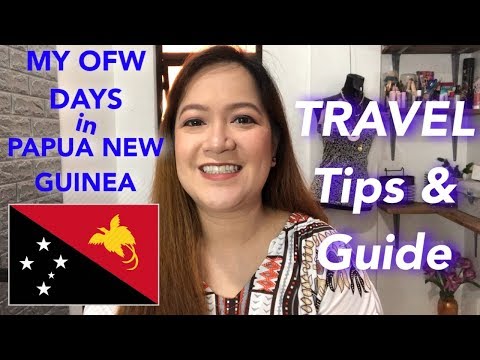
Author: Len Oruga
Papua New Guinea (PNG), a land of thriving tribal cultures, lush rainforests, and incredible biodiversity, is as enchanting as it is mysterious. Planning a trip to this stunning part of the world requires not only an adventurous spirit but also careful preparation. Whether you’re exploring the dense jungles, diving into the Coral Sea’s vibrant reefs, or engaging with the local tribes at a sing-sing (cultural festival), there are essential items you should pack to enhance your experience and ensure safety. Here’s your ultimate checklist for traveling to Papua New Guinea.
### 1. Travel Documents and Essentials
– **Passport**: Ensure it’s valid for at least six months beyond your planned return date.
– **Visas**: Depending on your nationality, you might need a visa. Check with the nearest Papua New Guinean embassy or consulate.
– **Travel Insurance**: Opt for comprehensive travel insurance that covers medical evacuation.
– **Copies of Important Documents**: Carry both digital and physical copies of your passport, visa, insurance details, and emergency contacts.
### 2. Health Precautions
– **Vaccinations**: Consult a travel doctor about vaccinations required for PNG; these often include shots for hepatitis A and B, typhoid, and possibly malaria prophylaxis.
– **First Aid Kit**: Pack a basic first aid kit with antiseptic wipes, bandages, pain relievers, antihistamines, and water purification tablets.
– **Insect Repellent**: Mosquito-borne diseases like malaria and dengue fever are prevalent. A strong insect repellent with DEET is necessary.
– **Sun Protection**: The equatorial sun can be harsh; pack sunscreen with high SPF, sunglasses, and a wide-brimmed hat.
### 3. Appropriate Clothing
– **Lightweight Breathable Clothes**: Opt for light colors to reflect sunlight. Long sleeves and pants can protect against sunburn and insect bites.
– **Rain Gear**: Being one of the wettest places on earth means sudden downpours are common; include waterproof clothing or a sturdy umbrella.
– **Sturdy Footwear**: Waterproof hiking boots are essential for trekking through rugged terrains and tropical forests.
### 4. Gear and Gadgets
– **Camera Equipment**: PNG offers breathtaking landscapes; bring adequate camera gear along with spare batteries or portable chargers.
– **Flashlight or Headlamp**: Power outages are frequent in remote areas so having your own light source is crucial.
– **Portable Water Filter Bottle** – While bottled water is often available, having a portable filter adds an extra layer of safety.
### 5. Cultural Sensitivity Items
– **Modest Clothing:** Be mindful of local customs especially when visiting villages — modest dress is appreciated.
– **Small Gifts:** It’s customary to bring small gifts (like school supplies) when visiting local communities as a gesture of goodwill.
### 6. Miscellaneous
– **Snacks:** Food choices can be limited especially in remote areas; bring non-perishable snacks like protein bars or nuts.
– **Language Guide:** While English is an official language, Pidgin (Tok Pisin) holds prominence locally. A basic phrasebook can enrich interactions with locals.
### Conclusion
Traveling to Papua New Guinea is truly an adventure that promises enriching cultural experiences set against some of the most spectacular natural backdrops in the world. By packing smartly — focusing not just on what you may need but also on respecting local customs — you set yourself up for an unforgettable journey into the heart of one of last uncharted territories on our planet.
Enjoy your trip knowing you’re well-prepared! With this comprehensive guide from Len Oruga in hand, embark on your PNG adventure confidently ready to explore all that this unique country has to offer!
